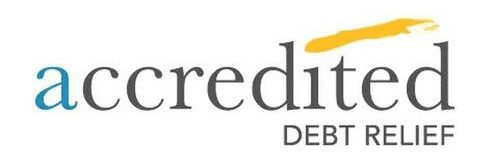Bankruptcy is a legal process for individuals or businesses who cannot repay their debts. There are different types of bankruptcy, including Chapter 7, Chapter 11, and Chapter 13. Each type has its own unique rules and requirements. Understanding the differences between them is crucial for anyone considering filing for bankruptcy. In this post, we will focus on Chapter 7 bankruptcy, how it works, qualification requirements, and how to file.
What is Chapter 7 Bankruptcy?
Chapter 7 bankruptcy, also known as liquidation bankruptcy, is a legal process that allows individuals or businesses to discharge their debts and start afresh. In this process, a bankruptcy trustee is appointed to liquidate non-exempt assets and use the proceeds to pay off creditors. Once the debts are discharged, the debtor is no longer legally obligated to pay them.
The purpose of Chapter 7 bankruptcy is to provide a fresh start for individuals or businesses who are struggling with overwhelming debt. This type of bankruptcy is typically a good option for those with little or no assets and a low income.
Pros of filing for Chapter 7 bankruptcy
- Discharging most unsecured debts, such as credit card debt and medical bills
- Stopping collection efforts, including wage garnishments and lawsuits
- Providing a fresh start to rebuild credit
Cons of filing for Chapter 7 bankruptcy
- Losing assets that are not exempt
- Potential damage to credit score
- Ineligibility for filing for Chapter 7 bankruptcy if previous bankruptcy filings have been made
Qualifications for Chapter 7 Bankruptcy

To qualify for Chapter 7 bankruptcy, individuals must pass a means test. The means test compares the debtor’s income to the median income in their state. If the debtor’s income is below the state median, they are eligible to file for Chapter 7 bankruptcy. If the debtor’s income is above the state median, they may still be eligible to file for Chapter 7 bankruptcy if they can demonstrate that they have no disposable income to pay off their debts.
Exceptions to the means test
- Disabled veterans with a disability rating of at least 30%
- Debtors with primarily business debts
- Certain members of the National Guard and military reserves
How to File for Chapter 7 Bankruptcy
Filing for Chapter 7 bankruptcy is a complex legal process that requires careful planning and preparation. The first step is to gather all the necessary documents, including tax returns, pay stubs, and bank statements. The debtor must also complete a credit counseling course before filing for bankruptcy.
The next step is to file a petition for Chapter 7 bankruptcy with the court. The debtor must provide all the necessary information about their income, assets, debts, and expenses. Once the petition is filed, an automatic stay goes into effect, which stops all collection efforts by creditors.
Hiring a bankruptcy attorney is highly recommended during this process. A bankruptcy attorney can guide the debtor through the complex legal process, ensure that all necessary documents are filed correctly, and represent the debtor in court.
Meeting of Creditors
After filing for Chapter 7 bankruptcy, the debtor must attend a meeting of creditors. This meeting is conducted by the bankruptcy trustee and provides an opportunity for creditors to ask questions about the debtor’s financial situation.
During the meeting, the debtor must answer questions under oath about their income, assets, and debts. Creditors may also ask questions about the debtor’s financial affairs. The meeting of creditors is an important part of the bankruptcy process, and it is crucial that the debtor attends.
Discharge of Debts

Once the meeting of creditors is completed, the debtor must wait for the court to issue a discharge of debts. The discharge of debts is a court order that eliminates the debtor’s legal obligation to pay most of their debts. However, some debts cannot be discharged, including student loans, taxes, and child support payments.
Types of debts that can be discharged include:
- Credit card debt
- Medical bills
- Personal loans
- Past due utility bills
Effects of Chapter 7 Bankruptcy
Chapter 7 bankruptcy can have a significant impact on the debtor’s credit score. Bankruptcy can stay on a credit report for up to 10 years, making it difficult to obtain credit or loans. Additionally, the debtor may lose assets that are not exempt from liquidation.
However, there are ways to rebuild credit after bankruptcy. Some strategies include:
- Obtaining a secured credit card
- Making timely payments on bills and loans
- Monitoring credit reports for errors
Alternatives to Chapter 7 Bankruptcy
There are alternatives to Chapter 7 bankruptcy that may be better suited for some individuals or businesses. These alternatives include debt consolidation, debt settlement, and credit counseling.
Debt consolidation involves combining multiple debts into one loan with a lower interest rate. Debt settlement involves negotiating with creditors to settle debts for less than what is owed. Credit counseling involves working with a counselor to develop a plan to pay off debts.
Pros and cons of each alternative should be considered before making a decision.
Conclusion
Chapter 7 bankruptcy is a legal process that can provide a fresh start for individuals or businesses struggling with overwhelming debt. Understanding the qualification requirements and filing process is crucial for anyone considering bankruptcy. Seeking professional advice from a bankruptcy attorney is highly recommended. While bankruptcy can have a significant impact on credit and assets, there are ways to rebuild credit and start anew.
FAQ

Q1. What is Chapter 7 bankruptcy?
A1. Chapter 7 bankruptcy is a legal process that allows individuals or businesses to discharge their debts by liquidating their non-exempt assets and using the proceeds to pay off creditors.
Q2. Who can file for Chapter 7 bankruptcy?
A2. To qualify for Chapter 7, you must pass the means test, which compares your income to the median income in your state. You must also have little or no disposable income to repay your debts.
Q3. What debts can be discharged in Chapter 7 bankruptcy?
A3. Most unsecured debts, such as credit card debt, medical bills, and personal loans, can be discharged in Chapter 7 bankruptcy. However, some debts, such as student loans and tax debts, cannot be discharged.
Q4. How long does Chapter 7 bankruptcy take?
A4. The entire Chapter 7 bankruptcy process typically takes about 4-6 months from the time of filing to the discharge of debts.
Q5. Will I lose all of my assets in Chapter 7 bankruptcy?
A5. No, you will not lose all of your assets in Chapter 7 bankruptcy. You can exempt certain assets, such as your home, car, and personal belongings, up to a certain value.
Q6. How will Chapter 7 bankruptcy affect my credit score?
A6. Chapter 7 bankruptcy will have a significant negative impact on your credit score, and it will remain on your credit report for up to 10 years.
Q7. Can I file for Chapter 7 bankruptcy if I have already filed for bankruptcy in the past?
A7. You can file for Chapter 7 again if it has been at least 8 years since your previous Chapter 7 filing, or 6 years since your previous Chapter 13 filing.
Q8. Can I keep my home if I file for Chapter 7 bankruptcy?
A8. It depends on the equity in your home and the exemptions available in your state. If you have little or no equity in your home, you may be able to keep it.
Q9. Do I need an attorney to file for Chapter 7 bankruptcy?
A9. While it is not required, it is highly recommended that you hire an experienced bankruptcy attorney to assist you with the Chapter 7 bankruptcy process.
Q10. Can I still be sued by creditors after filing for Chapter 7 bankruptcy?
A10. No, once your debts are discharged in Chapter 7 bankruptcy, your creditors cannot continue to pursue you for payment.
Glossary
- Chapter 7 Bankruptcy: A type of bankruptcy that involves liquidation of assets to pay off creditors.
- Liquidation: The process of selling assets to repay debts.
- Debtor: The person who files for bankruptcy.
- Creditor: The person or institution owed money by the debtor.
- Discharge: The release of a debtor from personal liability for certain debts.
- Exemption: A legal protection that allows a debtor to keep certain assets during bankruptcy.
- Trustee: The person appointed by the court to oversee the bankruptcy process.
- Means Test: A test used to determine eligibility for Chapter 7 bankruptcy based on income and expenses.
- Non-Exempt Assets: Assets that are not protected by exemptions and can be sold to pay off creditors.
- Automatic Stay: A legal order that stops creditors from collecting debts during the bankruptcy process.
- Bankruptcy Petition: The legal document filed by the debtor to initiate the bankruptcy process.
- Secured Debt: Debt that is backed by collateral, such as a mortgage or car loan.
- Unsecured Debt: Debt that is not backed by collateral, such as credit card debt.
- Reaffirmation Agreement: An agreement between the debtor and creditor to continue paying a debt after bankruptcy.
- Adversary Proceeding: A lawsuit filed during bankruptcy to resolve a specific dispute.
- 341 Meeting: A meeting between the debtor and creditors to discuss the bankruptcy case.
- Priority Debt: Debt that must be paid before other debts in bankruptcy, such as taxes and child support.
- Bankruptcy Dismissal: The termination of a bankruptcy case without a discharge of debts.
- Bankruptcy Estate: The property and assets owned by the debtor at the time of filing for bankruptcy.
- Bankruptcy Code: The federal law that governs bankruptcy proceedings.
- Bankruptcy Court: Bankruptcy Court is a specific court that handles cases related to individuals or businesses that are unable to repay their debts and are seeking legal protection from their creditors. The court oversees the process of bankruptcy and ensures that the debtor’s assets are distributed fairly among their creditors.
- Secured Debts: Secured debts are financial obligations that are backed by collateral, such as a house or a car. In the event of default, the creditor has the right to seize the collateral and sell it to recover the outstanding debt. This provides the lender with a level of security and reduces their risk of loss. Examples of secured debts include mortgages, car loans, and secured credit cards.










